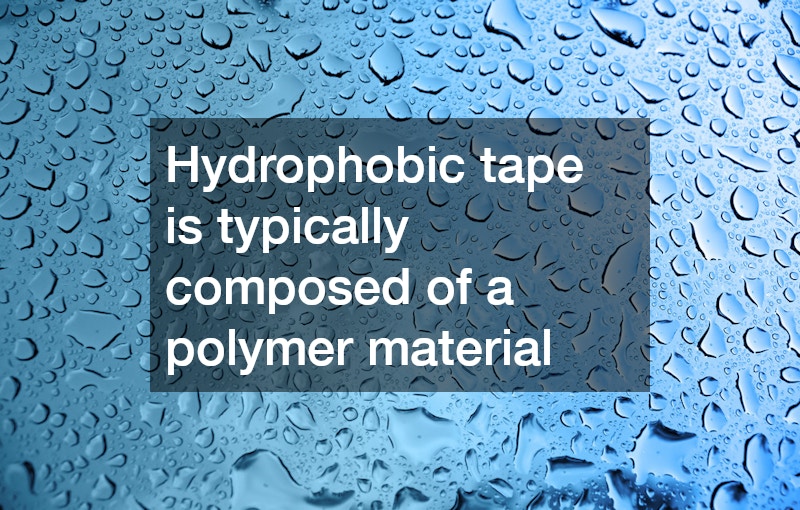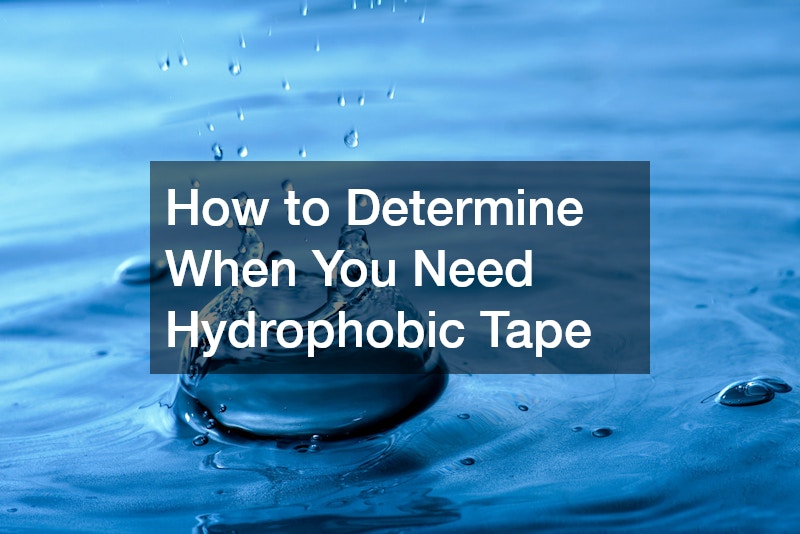There are various scenarios and considerations for determining the need for hydrophobic tape in different applications. Hydrophobic tape is an innovative solution that can significantly enhance the performance and longevity of products in various industries.
Understanding the function and composition of hydrophobic tape is essential. With the proliferation of moisture-sensitive components in electronics or other goods, knowing when to apply this tape can make a difference in product durability.
It is crucial to understand the features, benefits, and potential misconceptions surrounding hydrophobic tape to be equipped with the knowledge necessary to make informed decisions.
When it comes to choosing the right adhesive solution, not all tapes are created equal. In environments where water, humidity, or harsh conditions are a concern, standard options may quickly lose effectiveness. This is where hydrophobic tape comes in. Designed to repel moisture and provide strong, lasting adhesion, this tape is ideal for applications ranging from outdoor repairs to sensitive electronic protection. Understanding when to use hydrophobic tape can save time, prevent damage, and improve results, making it an essential tool in both professional and everyday settings.
Hydrophobic Tape and How it Works
Hydrophobic tape is typically composed of a polymer material that possesses unique qualities enabling it to repel water effectively.
The functional mechanism is based on reducing the surface energy, which prevents water molecules from adhering to the tape. As a result, water droplets bead up instead of spreading, making it an ideal choice for various protective applications.
Commonly used in industries such as electronics, automotive, and construction, hydrophobic tape serves not just as an adhesive but also as a barrier against moisture, adapting to numerous surfaces while maintaining its efficacy.
When to Use Hydrophobic Tape
One of the primary scenarios for using hydrophobic tape is in environments with high humidity or exposure to water, where moisture can degrade sensitive materials.
Another critical condition involves the interaction with metals and other materials that are prone to rust or corrosion. Applying hydrophobic tape can significantly reduce the chances of moisture-related damage, ensuring long-term performance.
Additionally, in situations where electrical components need protection from water ingress, hydrophobic tape proves invaluable, providing a reliable shield against potential malfunctions caused by moisture exposure.
The Benefits of Using Hydrophobic Tape
One of the most notable benefits is its ability to extend the lifespan of products by preventing moisture damage.
Another key advantage is its versatility, as hydrophobic tape can be applied to a wide range of materials and surfaces without compromising adhesion. Whether in a manufacturing environment or within household applications, it adapts seamlessly.
Lastly, hydrophobic tape is easy to apply and can be a cost-effective solution compared to traditional sealing methods, thus making it an attractive option for businesses and consumers looking to balance performance and budget.
How to Choose the Right Type of Hydrophobic Tape
When selecting hydrophobic tape, the first consideration should be the specific application and the environmental conditions it will face.
Another important factor is adhesion strength; different tapes provide varying degrees of stickiness, which can impact their effectiveness. Evaluating the surfaces that the tape will bond to is crucial for ensuring durability.
Finally, thickness can play a vital role in performance. A thicker tape might offer more durability but could also impact flexibility; thus, finding the right balance is essential based on the intended use.
Common Misconceptions About Hydrophobic Tape
One common misconception is that all hydrophobic tapes are suitable for every application, which is often not the case.
Another myth is that hydrophobic tape is completely waterproof; while it offers significant protection against moisture, it may not be suitable for prolonged submersion or heavy water exposure.
Many users believe that hydrophobic tape can replace all types of sealing methods; however, its effectiveness is contingent upon proper usage and environmental conditions, which users must adequately assess.
Understanding the functions and optimal uses of hydrophobic tape can help users make informed decisions about its application in both industrial and personal contexts. Throughout this article, we have explored the unique properties of hydrophobic tape, its applications, benefits, and considerations for selection.
By knowing when and how to properly use hydrophobic tape, individuals and companies can protect sensitive components and enhance product longevity. Learning about common misconceptions helps in maximizing its effectiveness as a solution.
Equip yourself with this knowledge to ensure the best use of hydrophobic tape in your projects, safeguarding against moisture and prolonging the lifespan of your materials.
Determining when to use hydrophobic tape comes down to understanding the specific needs of your project and the conditions it will face. This specialized tape is best suited for situations where moisture resistance, durability, and long-lasting adhesion are critical, such as in outdoor applications, medical uses, or electronic protection. By carefully evaluating factors like exposure to water, environmental stress, and the materials being bonded, you can decide whether hydrophobic tape is the most effective solution. When used appropriately, it not only extends the lifespan of your projects but also ensures reliable performance in challenging environments.





